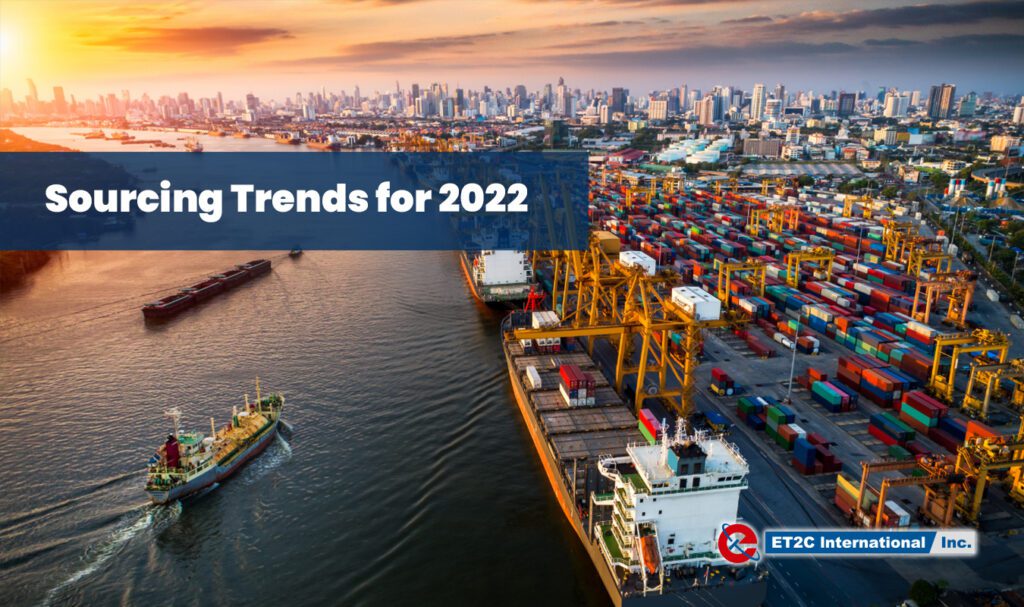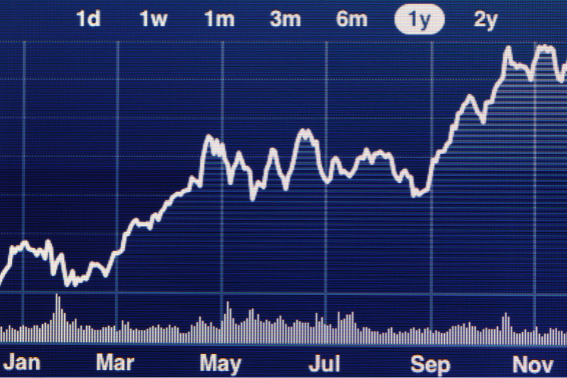
Sourcing Trends for 2022 have echoes of last year, although the length of the Pandemic has accelerated certain offshore manufacturing strategies.
source trend 2023 : Introduction
For the second year running our predictions did not foresee the impact that the Pandemic has had on the global sourcing landscape. Vaccinations have left a significant dent in Covid’s armour but that has not stopped different waves of infection (and variants) from spreading across continents as markets lurched between lockdowns. With Omicron, the virus is currently breaking record daily infections in numerous countries (the US and continental Europe) and now, worryingly, has Asia in its sights.
The net outcome has been continued disruption across both sourcing and sales markets throughout 2021. The broader impact on tightening supply capability (containers and commodities) was overlayed by structural shifts in demand which has sustained higher prices across multiple markets. Travel is still largely restricted between the West and East. So, in short, it’s been a year of challenges; adaptability and resilience have come to the fore. Those with visibility in their sourcing markets have benefited.
So, what does this mean for 2022? What will be the legacy of Covid-19 on sourcing markets? What technological trends will come to the fore? Will freight rates still be a hot topic? Are the ‘bears’ stalking the commodity ‘bulls’? We have again dusted off our crystal ball to see what sourcing trends we think will be a feature of 2022 (Spoiler Alert – ET2C is not able to predict the future).
Sourcing Trends – Predictions
1. Endemic
Omicron appears to be a way out of this Pandemic given all signs and data are pointing to less severe disease whilst its infectiousness will push other current variants aside. The speed at which this happens will largely be dependent on Covid strategies in different countries and vaccination rates. For example, the data in the UK is starting to point to this endemic phase with high levels of vaccination and natural immunity, whereas Hong Kong has relatively low vaccination rates and natural immunity.

Prediction: Although there are certainly positives on the horizon, the different Covid strategies between markets is likely to lead to continued disruption within supply chains. This is particularly true of Asian markets which have pursued the ‘Covid Zero’ approach. The result is that near sourcing options (like Turkey for Europe) will continue to gain market share as part of a global sourcing strategy.
2. Travel
There is no doubt that some markets (notwithstanding a further mutant variant emerging) will loosen border restrictions into 2022. Certain markets already have and depending on where you are from, there is increasing ease of travel. However, for those countries, which continue to pursue a much tougher stance against the virus, restrictions will remain in place. Certainly, differences between Governments’ approach to vaccinations, policies in place and State affordability will all be factors.

Prediction: Expect not to be able to broadly visit your Asian sourcing markets until the autumn (Q3) at the earliest. Those markets pursuing a Covid Zero strategy will be closed for the longest period. Make sure you have sufficient resource in place to therefore manage your suppliers.
3. Near Sourcing
The Pandemic, as a supply chain shock, highlighted the need for companies to de-risk their sourcing markets and build in greater resilience. This trend has only been accelerated by the Pandemic and disruptions of 2021 (high freight rates in particular).
Prediction: Companies will continue to embed greater resilience within their supply chains and look to remove dependency on any one market where it makes sense to do so. Remember, this will bring additional complexity (language, culture, regulations, legal etc.) as you move into new markets and making sure you have the capability and reach to manage suppliers will be important.
4. Prices
2021 saw sustained freight rates and high commodity prices which ultimately resulted in inflation shipping to the West as part of the landed cost. Supply constraints with containers and shippers restricting space on vessels allowed freight rates to surge 500% from a year earlier. Similarly, commodity prices were hit by increased demand (structural shifts) and broadly a lack of investment in mining assets.

Prediction: With continued disruption and supply not meeting demand, we anticipate freight rates to remain high although pull back from the dizzy heights of 2021. For commodity prices, particularly with metals, we anticipate sustained high prices for 2022 due to increased demand/supply imbalances.
5. Carbon Neutrality & Carbon Zero
On the back of Cop26, there is renewed focus on carbon neutrality in the lead up to Carbon Zero targets for business by 2050. Understanding the carbon emissions across your company and supply chain (Scope 1, 2 & 3) as a starting point will allow you to identify what needs to be addressed as a starting point. It requires all stakeholders within the business and supply chain to engage in the discussions but with the targets in place, this all needs to start now.
Prediction: Carbon emissions data will start becoming a key metric in buying decisions and having suppliers who can engage at this level and think strategically will be increasingly important. Often carbon neutrality is linked with other sustainable initiatives (for example water usage in a plant) and it all forms part of the broader sustainability piece.
6. Circular Manufacturing
As part of reducing environmental impact, closed loop recycling is increasingly of interest to certain sectors. This uses materials already used to make new products thereby reducing the waste and requirement to manufacture virgin material. Already being used by Ikea for furniture and the fashion sector is engaged with the initiative as well.

Prediction: This will become more prevalent in the fashion sector as the sector looks to reduce the amount of waste it produces, raw materials consumed, water usage and carbon footprint.
7. Metaverse
We are entering a virtual era and with the company previously known as Facebook, now Meta, pushing into this arena the development of digital worlds is moving at pace.
Prediction: Will we be able to start sourcing in a digital world? Just as visiting the shops virtually, will it ultimately be possible to visit factories virtually to purchase products? Perhaps unlikely in 2022 but do at least expect discussions around this for business and supplier meetings.
8. China to top the medal table at Beijing 2022
With the Beijing Winter Olympics starting in February, we will be back to watching a lot of people in lycra perform death-defying acts in search of the elusive gold medals (bobsled and ski jump in particular!). China to top the medals table and Jamaica to compete and win (if they can crowdfund a much-needed sled) the bobsled.
Happy New Year of the Tiger
The modus operandi of disruption over the past year, whether it was traveling, supply chains, schools etc. should hopefully begin to ameliorate over the coming year. That is not to say that there will not be similar types of disruption and challenges thrown our way. Of note, though the Lunar new year welcomes the year of the Water Tiger, and that generally means a year of extremes. Let’s hope that they are positive ones!
At ET2C, we are always looking to the future to ensure that we are providing our clients with the most relevant services and products. Please contact us at contact@et2cint.com.

